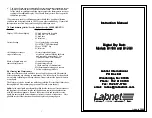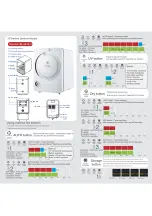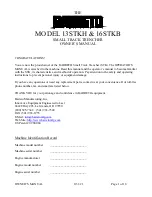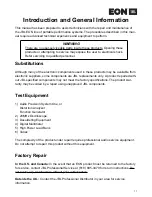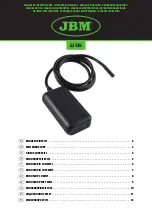
Sealey Group, Kempson Way, Suffolk Business park, Bury St Edmunds, Suffolk. Ip32 7AR
01284 757500
01284 703534
www.sealey.co.uk
ENVIRONMENT pROTECTION
Recycle unwanted materials instead of disposing of them as waste. All tools, accessories and packaging should be sorted, taken to
a recycling centre and disposed of in a manner which is compatible with the environment. When the product becomes completely
unserviceable and requires disposal, drain any fluids (if applicable) into approved containers and dispose of the product and fluids
according to local regulations.
Note
: it is our policy to continually improve products and as such we reserve the right to alter data, specifications and component parts without prior
notice.
Important
: No Liability is accepted for incorrect use of this product.
Warranty
: Guarantee is 12 months from purchase date, proof of which is required for any claim.
5.6.
BRAKING SYSTEMS
5.6.1.
TESTING BRAKE SERVO DIApHRAGM
5.6.1.1.
Remove vacuum supply line from brake servo fitting. Attach the vacuum tester to vacuum supply port on servo (fig.13). Operate pump
to create approximately 15inHg of vacuum and wait for 30 seconds. No vacuum drop should be observed on the gauge reading. If
the vacuum drops this indicates that the brake servo diaphragm is faulty. In this case the servo should be removed for overhaul by an
authorised repairer or replaced.
5.6.2.
BRAKE BLEEDING - ASSEMBLY OF BRAKE BLEEDER KIT
5.6.2.1.
Ensure that the vacuum pump is connected to the brake bleeder reservoir in accordance with the assembly diagram (fig.14). Failure to do
so will result in brake fluid being drawn into the vacuum pump.
5.6.3.
BRAKE BLEEDING pROCEDURE
WARNING!
Familiarise yourself with the hazards of brake fluid - read manufacturer’s instructions on the container.
DO NOT
touch the
vehicle’s brake pedal whilst bleeding the brakes.
5.6.3.1.
Refer to the specific vehicle manufacturer’s instructions for brake bleeding and wheel sequence procedure before proceeding. If no
specific instructions from the vehicle manufacturer exist, follow the instructions detailed below.
5.6.3.2.
Remove the cap of the vehicle’s master brake fluid reservoir. If the fluid level is not at maximum, top it up.
5.6.3.3.
Attach the appropriate size bleeding attachment to the bleed nipple on the brake calliper of the first wheel, normally farthest from the
master brake fluid reservoir.
5.6.3.4.
Operate vacuum pump until approximately 21inHg vacuum is created.
5.6.3.5.
Apply copper grease to the brake bleeding nipples before and after the brake bleeding procedure to reduce the possibility of seized or
broken nipples when the brakes are next bled.
5.6.3.6.
Open the bleed nipple about a quarter of a turn. Allow brake fluid to be drawn until no air bubbles are visible in the brake fluid in the clear
hose.
5.6.3.7.
Tighten the bleed nipple.
5.6.3.8. Remove the attachment from the brake nipple.
5.6.3.9. repeat the process as necessary.
NOTE!
Check the master brake fluid reservoir regularly to ensure that the level does not drop too far, and top up as necessary.
NOTE!
Empty bleeder container regularly and
DO NOT
allow container to overfill as brake fluid will be drawn into vacuum pump.
WARNING!
When brake bleeding and/or fluid changing is complete, test the action of the brake pedal to ensure that the brakes are
working before attempting to drive the vehicle on the road and test the vehicle for satisfactory performance of the braking system.
5.7.
CLUTCH BLEEDING pROCEDURE
5.7.1.
Refer to the relevant vehicle manufacturer’s instructions for clutch bleeding procedure. If no specific instructions from the vehicle
manufacturer exist, follow the same basic procedure as the brake bleeding instructions above.
fig.13
fig.14
fig.15
V
S4022.V2 Issue 1 17/01/18
Original Language Version
© Jack sealey limited







